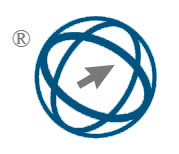Improved Generative Adversarial Network and Particle Swarm Optimization Support Vector Machine for Tennis Serving Behavior Analysis
Abstract
This study proposes a behavior analysis model based on an improved generative adversarial network and particle swarm optimization support vector machine algorithm for deblurring and feature extraction in tennis video serving behavior. The model first improves the generative adduction network by introducing a multi-layer convolution structure and a variety of activation functions, including three-layer convolution. The activation function is selected to use ReLU and Leaky ReLU alternately to enhance the generator in capturing image details. During model training, the generator optimizes the output image by minimizing the Wasserstein distance, and the discriminator evaluates the difference between the generated image and the real image. Then, to further extract features, the particle swarm optimization algorithm was used to dynamically optimize the feature extraction of each frame in the feature space, and dynamically adjust the inertia weights. The initial value was 0.9 and the final value was 0.4. After feature extraction, the data were input into SVM for classification. The penalty parameter of SVM was set to 1 and the accuracy was set to 0.001. The results of the comparative experiments demonstrated that the proposed method exhibited superior performance in deblurring images, with an average subjective score of 81.16 points, a notable advantage over the comparison algorithm. In the objective evaluation, the average Peak Signal-to-Noise Ratio (PSNR) and structural similarity value of the image after defuzzing by the research method reached 35.12dB and 0.93, respectively. The PSNR and structural similarity of the image increased by 13.56% to 18.29% and 8.33% to 19.90%, respectively. In the feature extraction and classification experiments, the accuracy of the proposed algorithm reached 91.24%, which was significantly higher than the traditional algorithm. The convergence speed was faster than the particle swarm optimization algorithm, the ant colony optimization algorithm, and the simulated annealing algorithm, reducing the number of iterations by 35.33%, 40.52%, and 51.55%, respectively. The data validate that the designed method has good application prospects in improving video image quality and feature extraction.
Full Text:
PDFDOI: https://doi.org/10.31449/inf.v49i12.7292

This work is licensed under a Creative Commons Attribution 3.0 License.









